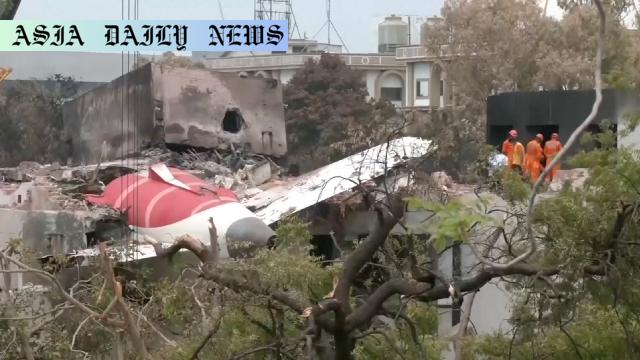Air India Crash: Indian authorities are preparing to release a preliminary report into a plane crash last month in Gujarat, claiming over 270 lives.
Key Point 1: The Air India crash on June 12 took over 270 lives, with only one survivor.
Key Point 2: Investigation focuses on pilot actions, including fuel switches being turned off.
Key Point 3: Death toll includes medical college students hit by the aircraft’s wreckage.

Preliminary Report on the Air India Crash
The tragic Air India plane crash on June 12 in Gujarat left an undeniable scar on the country and the aviation industry. Over 270 lives were lost, including students at a medical college dormitory that was struck by the falling aircraft. The preliminary investigation report, anticipated to be released soon, is expected to provide critical insights into the events leading up to the disaster. Aviation experts and authorities are focusing particularly on the pilots’ actions, with reports suggesting that fuel flow switches were turned off, potentially contributing to the crash. Civil aviation authorities insist that timely corrective measures will be undertaken to avoid such incidents in the future.
The Investigation: Key Findings So Far
The Wall Street Journal reported that the focus of the investigation lies in the human element of the flight. According to early findings, critical fuel management systems were reportedly turned off, leading to engine failure shortly after takeoff. This raises pressing concerns about pilot error, procedural lapses, or possible system glitches. Kishore Chinta, a former aviation investigator, emphasized the importance of thorough inspections of similar aircraft to rule out systemic engineering faults. Concurrently, human factors, including fatigue or misjudgment, are being closely scrutinized. The findings may trigger a re-evaluation of pilot training programs across the country.
Consequences and Next Steps
The loss of over 270 lives has also raised alarms about air safety protocols in India. Civil Aviation Minister Kinjarapu Rammohan Naidu has vowed swift action once the investigation is complete. If found responsible, manufacturers or operational agencies will need to implement immediate corrective steps. Furthermore, contingency planning, such as updated emergency protocols and better training for handling complex failures mid-flight, may emerge as essential aspects of future aviation reforms. The tragedy also underscores an urgent need for robust aviation oversight mechanisms to ensure passenger safety.
Broader Implications for Air Travel Safety
Beyond the immediate investigation, the Air India crash has triggered a larger debate about the state of air travel in India and globally. Experts argue that stricter regulatory frameworks and enhanced technology adoption are necessary to minimize such accidents. The incident has also exposed vulnerabilities in urban planning, as the flight’s wreckage caused collateral damage—killing medical students in their dormitory. Aviation leaders and urban policymakers now face the dual task of preventing both immediate and indirect consequences of airline disasters.
Commentary
Air Safety is of Paramount Concern
The tragic Air India crash has captivated the nation’s attention for the gravity of its human toll and the devastating scale of the incident. While aviation is still considered one of the safest modes of transportation, incidents like this serve as grim reminders of the vulnerabilities that can arise from technical malfunctions, human errors, or a combination of both. The fact that preliminary investigations are hinting at possible mistakes in operating critical fuel switches highlights a pressing need to examine the robustness of cockpit systems and protocols.
The Human Cost of Negligence
Perhaps the most heartbreaking aspect of the catastrophe is the loss of innocent lives beyond those on the aircraft. The medical students who perished when the plane struck their dormitory are a sobering reminder of the ripple effect such tragedies can trigger. Safety discussions often center around passengers and crew onboard, but this crash brings forth a stark realization of a more extensive impact involving all areas surrounding flight zones. Comprehensive regulatory reforms and meticulous accident prevention measures must legitimately extend to address these broader ramifications.
Lessons for the Future
There is hope that this incident will drive substantial and meaningful change within the aviation industry. The government and relevant authorities have an opportunity to set a high standard by responding with transparency and pragmatism. The aviation industry thrives on precision, and every detail from pilot training to aircraft maintenance must be examined scrupulously. A robust, unbiased inquiry and strict adherence to recommended reforms can pave the way for safer skies and increased public trust in air travel.


